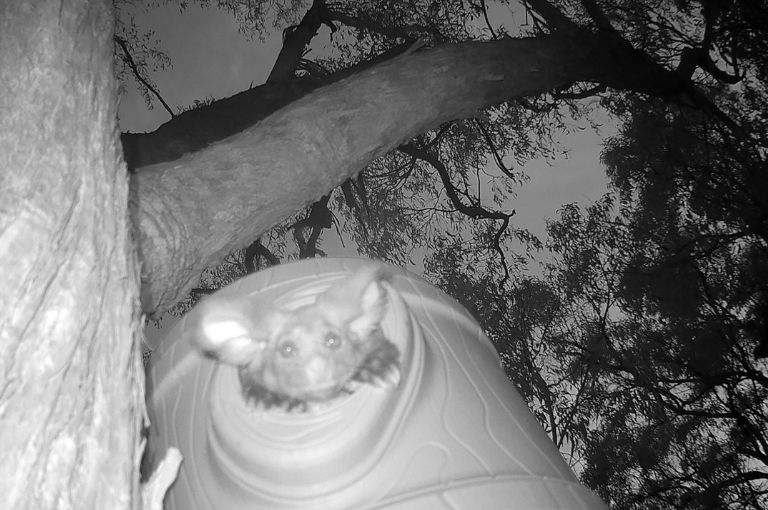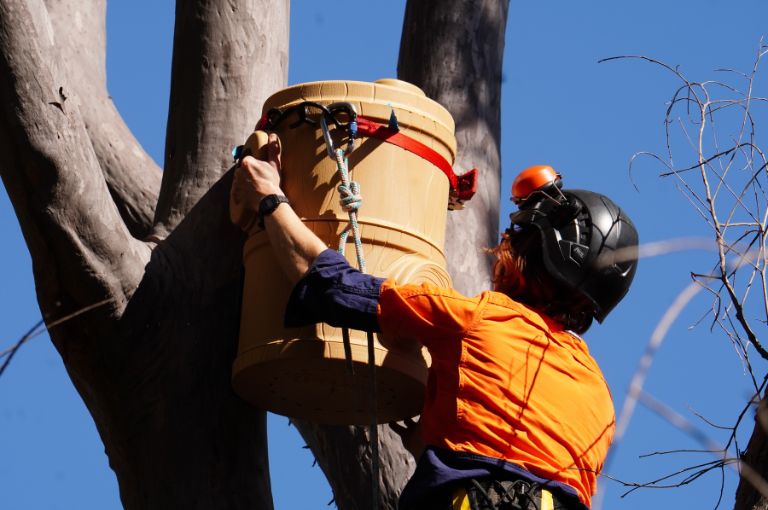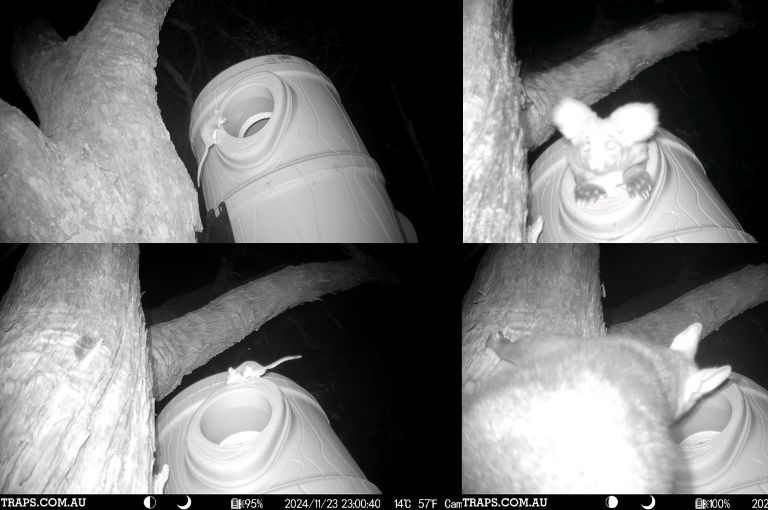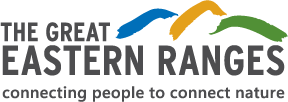
The sight of an endangered greater glider emerging from a new high-tech nest box in south-east Queensland has delighted conservationists and locals.
The Habitat modular nest box, which was especially tailored towards greater gliders, was one of twelve popped up at Dingo Mountain in June last year.
Solar-powered cameras were put up alongside some boxes to observe what animals took up residence. The inventors of the greater glider box were thrilled to see the fluffy marsupial emerging from one when they checked the cameras earlier this month.
The boxes were installed as part of the Bunyas to Border (B2B) koala climate corridors project spearheaded by the Great Eastern Ranges, International Fund for Animal Welfare and Lockyer Uplands Catchments Inc (LUCI).
“We selected the Habitat nest boxes because they are built to mimic natural tree hollows, are very durable and can be customised to suit the specific needs of different animals,” says Maree Clancy, B2B Project Coordinator.

Greater gliders, which were once common across eastern Australia, have declined by an alarming 80% over the past twenty years. Maree says that the nest boxes were put up to provide much needed new habitat for greater gliders and other wildlife in the corridor.
“Greater gliders are hollow-dependent, which means that they need tree hollows to survive. Hollows large enough to support a glider of this size take around 200 years to form. It is these old hollow-bearing trees that we are losing in great numbers through logging, clearing of land for development and agriculture, and the Black Summer bushfires.”
A feathertail glider and some common brushtail possums were also seen using the boxes.

“It’s always wonderful to see our nest boxes being used by the target species and extra special when it is a threatened species such as the greater glider,” says Mick Callan, Director at Habitat Innovation & Management.
“We’ve heard reports that greater gliders don’t use nest boxes in south-east Queensland. This is our third project where our boxes have been installed for the species with success at each location.”
“It’s a great reward that demonstrates that our highly insulated nest boxes, configured with ecological expertise for the target species, can play a big part in threatened species recovery.”
The nest boxes were installed in a greater glider hotspot in the B2B corridor that Paul Revie from Wildlife Queensland identified through desktop analysis.
“Now that we have evidence that the approach used by Paul to help select ideal sites to locate the nest boxes was effective, we are seeking funds to install more across the corridor,” says Maree.
LUCI has also been engaging local landholders across the corridor to plant trees and install wildlife drinkers to help animals adapt and communities build resilience to the impacts of climate change.



 Media release
Media release